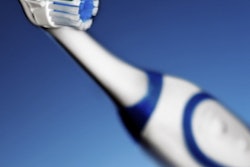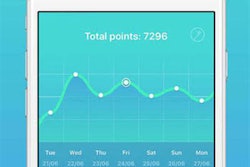
How can you get adolescents to brush longer and more effectively? Using an interactive power toothbrush connected to a smartphone could improve oral health habits and reduce plaque levels in this finicky population, according to a new study.
Researchers compared plaque levels in adolescents instructed to brush as usual, with additional time in areas needing more care, using either a manual or an interactive power toothbrush that connects to a smartphone. They found that plaque levels dropped and brushing time increased with the use of an interactive power toothbrush compared with a manual toothbrush.
"An interactive power toothbrush with Bluetooth technology appears to appeal to technology-savvy adolescents, producing increases in brushing efficacy, duration, and compliance among this vulnerable population," wrote the authors, led by Dr. Christina Erbe, an orthodontist at the Johannes Gutenberg University University Medical Center in Mainz, Germany (BMC Oral Health, August 3, 2018).
Maintaining their interest
Many adolescents don't follow toothbrushing recommendations, previous studies have found. Additionally, this demographic may experience higher levels of plaque formation due to their consumption of carbohydrate-dense snacks and sugar-containing drinks, as well as the difficulty of removing plaque when undergoing fixed orthodontic treatment.
Since power toothbrushes have demonstrated better plaque removal than manual toothbrushes, the current study examined whether brushing with an interactive power toothbrush with Bluetooth connectivity to a smartphone mobile app would improve plaque removal and increase brushing duration compared with using a manual toothbrush in adolescents, who interact frequently with technology and cellphones.
The power toothbrush used in the study (Oral-B Professional Care 6000, Procter & Gamble) allows immediate feedback on brushing force and duration, and it provides reminders and guidance regarding focusing additional time and effort on areas that clinical exams have found to have excessive plaque or gingivitis.
“These results demonstrate striking oral health benefits when patients are motivated by advanced oral hygiene products and technologies to brush longer and more thoroughly.”
Potential study participants underwent a screening visit that involved identifying these focus care areas and a plaque evaluation using the Turesky Modified Quigley-Hein Plaque Index (TMQHPI) (minimum mean score of 1.75 on a scale of 0 to 5). The investigators also asked participants to brush as usual using their regular toothbrush and discreetly observed and recorded brushing time.
At a baseline visit, the investigators randomly assigned 60 participants ages 13 to 17 to two groups: Half of them used the power toothbrush with an Oral-B Precision Clean brush head, and the other half used a soft manual toothbrush (Oral-B Indicator 35, Procter & Gamble). All participants also received the Blend-a-Med Classic dentifrice (Procter & Gamble). The power toothbrush group also received a charger and Samsung Galaxy S3 smartphone loaded with the Oral-B Application v2.1, OB2 phone app.
The investigators instructed participants in the manual group to brush twice daily for two minutes in their usual way and those in the power brush group to follow the manufacturer's instructions. They told them to brush in each of their focus care areas for an additional 10 seconds, which was communicated via verbal instructions in the manual group and via the Oral-B app in the power group.
Two weeks later, the participants underwent another oral exam, and the investigators asked them to brush as they had during the study. One subject in the power group did not complete the study.
The researchers reported similar baseline data between the groups. However, plaque levels in the power group dropped 34% (p < 0.001), with an adjusted mean whole mouth TMQHPI score reduction of 0.865, but it lessened just 0.044 or 1.7% (p = 0.231) in the manual group, a difference that was highly statistically significant (p < 0.0001).
Plaque in focus care areas as measured by mean TMQHPI scores dropped significantly in both groups (p ≤ 0.0001), but this difference was significantly greater in the power group compared with the manual group, according to the researchers.
Mean brushing time increased significantly in the power group but remained essentially unchanged in the manual group, and this change was significantly different between the groups (p < 0.001).
| Mean brushing times of power vs. manual brush groups | ||
| Toothbrush | Baseline | After 2 weeks |
| Manual brush (n = 30) | 119.2 sec | 118.4 sec |
| Interactive power brush (n = 29) | 108.6 sec | 143.5 sec |
Brushing a long time
A study limitation is that the brushing time at baseline of 113.9 seconds was much greater than the typical average brushing time of one minute or less, which may have been due to subjects modifying their behavior since they knew they were participating in a study, the authors wrote.
Overall, brushing time still increased by a statistically significant amount in the power brush group.
"These results demonstrate striking oral health benefits when patients are motivated by advanced oral hygiene products and technologies to brush longer and more thoroughly," the authors concluded.
Study disclosures
Procter & Gamble, which manufactures the toothbrushes used in the study, funded the research, participated in its design, and provided statistical analysis and data interpretation.



















